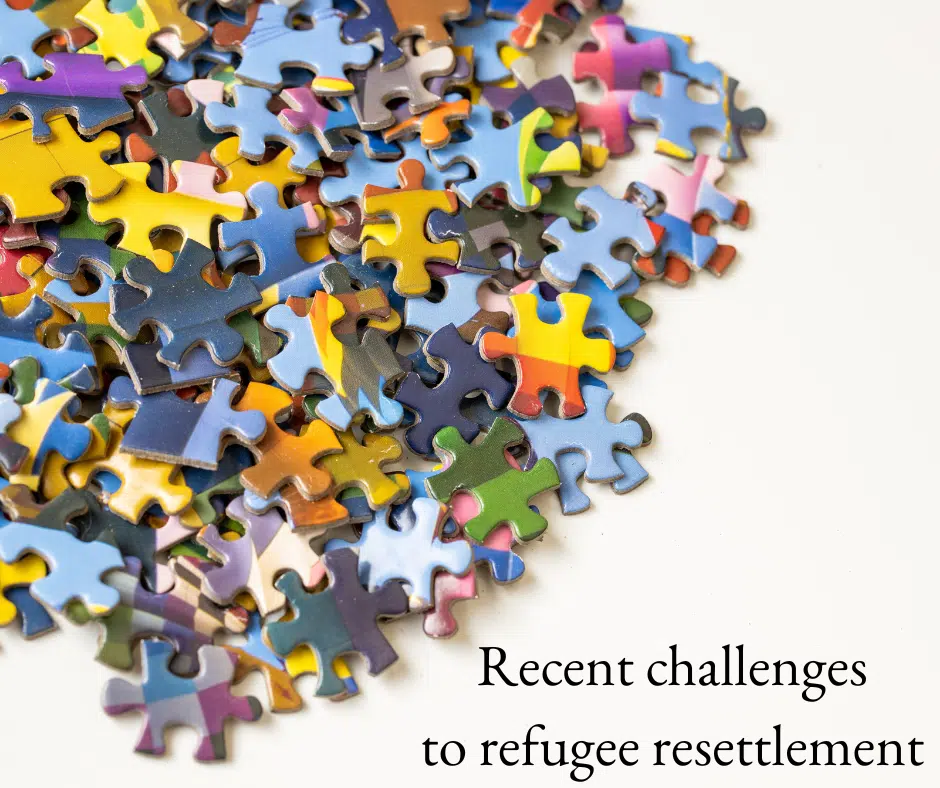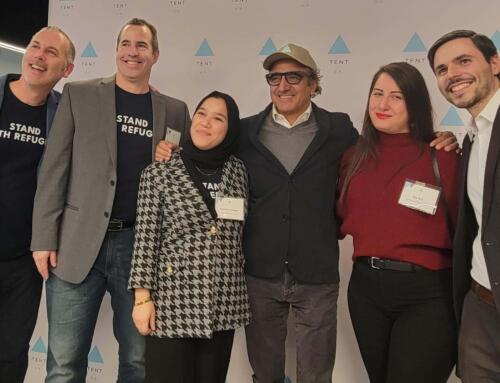This is Part 2 of a series of posts about community sponsorship as practiced by one of EMM’s affiliates. Read Part 1.
Interfaith Refugee Ministry (IRM) has been resettling refugees in eastern North Carolina for over 30 years. Despite its strengths, IRM must also contend with challenges that resettlement agencies across the country face, in particular:
- Significant fluctuations in refugee admissions and funding
- The lack of affordable housing
To understand how these challenges impact organizations like IRM, we consider each in turn.
Challenge #1: fluctuations in refugee admissions and federal funding
For decades following the passage of the Refugee Act in 1980, there was broad bipartisan agreement on the importance of refugee resettlement as part of the U.S.’s global responsibilities and national security. Although admissions dipped briefly as new national security measures were put into place after the 9/11 attacks, bipartisan support for resettlement was the norm under Republican as well as Democratic administrations – until the election of Donald Trump.
From 2017 to 2021, the resettlement sector was significantly weakened by two overlapping forces: the Trump administration’s restrictionist immigration policies and the Covid-19 pandemic. Restrictions on refugee admissions had system-wide effects, as many fewer resources were allocated to overseas processing as well as domestic reception and placement.
When the Covid-19 pandemic began in 2020 and all refugee admissions were suspended for months, this only added to the sharp decline in refugee arrivals and the pressure put on resettlement agencies. Roughly a third of local resettlement agencies across the U.S. closed during these years, due to the deep cuts to refugee admissions (see below), lack of federal support, and changes wrought by the pandemic.
Under the Biden administration, efforts to rebuild refugee resettlement have been underway since 2021. However, this has meant working through backlogs, re-opening resettlement agencies, and gradually expanding the capacity of local agencies and community partners.

These national trends have had consequences for the affiliates who provide direct services to refugees. For IRM in New Bern, after averaging about 185 clients annually for fiscal years 2013 through 2016, their annual average from 2017 to 2020 was only 87, with an especially precipitous drop in 2020, as the pandemic began. While they have made steady gains since 2021, the annual average as of fiscal year 2023 remains below that of the pre-Trump/pre-pandemic period.

During the peak pandemic season, many faith communities did not gather in person for months, leading to a dip in attendance and volunteerism. IRM staff have been rebuilding connections with local congregations who might serve as co-sponsors, but this too takes time.
Challenge #2: affordable housing
The lack of affordable housing is a nationwide problem, impacting countless people living on a limited income. While early in the pandemic many households benefited from federal stimulus checks and eviction moratoria, the end of these protections brought a quick return to precarity for many, as rent and other costs of living have risen.

Although refugees receive modest direct financial assistance for their first 90 days in the U.S., this rarely covers their expenses. Most refugees cannot initially afford to own a car, and reliance on public transportation adds a further wrinkle to the search for affordable housing that meets their needs. In addition, refugees do not have an established credit history and must rely on resettlement agencies to vouch for their household income and earning potential.
For these reasons, resettlement agencies try to establish relationships with landlords or property managers who are willing to work with their clients. Yet broader changes in the national housing market have made this difficult. As Susan Husson, IRM’s executive director explains,
We used to have a good relationship with a local company who was managing an entire apartment complex. There was always an apartment or two available, at a reasonable price. But a few years ago, it was sold to a national company, who also bought up at least six more apartment complexes. They doubled the rent and added new requirements that made it impossible for our clients to qualify. And I just saw in the paper: rents in New Bern have gone up 40% since 2019!
When we were working with local landlords or managers, they knew us, maybe we even went to church with them, we could go talk to them, and they understood the situation of our clients – unlike these national companies, where all you have is an “800” number to call.
The trend towards absentee real estate investors makes it harder to establish the relationships that are essential to finding affordable long-term housing for refugees.
But there are some signs of hope. As Susan Husson reports,
Now everyone on our team is looking for housing. We found another complex, who are good to work with, and now we have many of our clients there.
And the really cool thing is – we have some former clients, Karen people from Burma, who arrived a few years ago. They moved right up the ladder. As we like to say, refugees come in, they rent, they buy – houses, cars. Some of these people bought rental properties and now they are renting to our current clients. And we’re so happy to see that!
In brief, despite the organization’s long record as a non-profit, its staff must work hard to overcome the challenges that resettlement agencies of all sizes face in the current economic and political context. In facing these challenges, IRM’s connections with local partners are one of their key strengths.
Next, we will see how IRM staff cultivate these connections with community groups.








